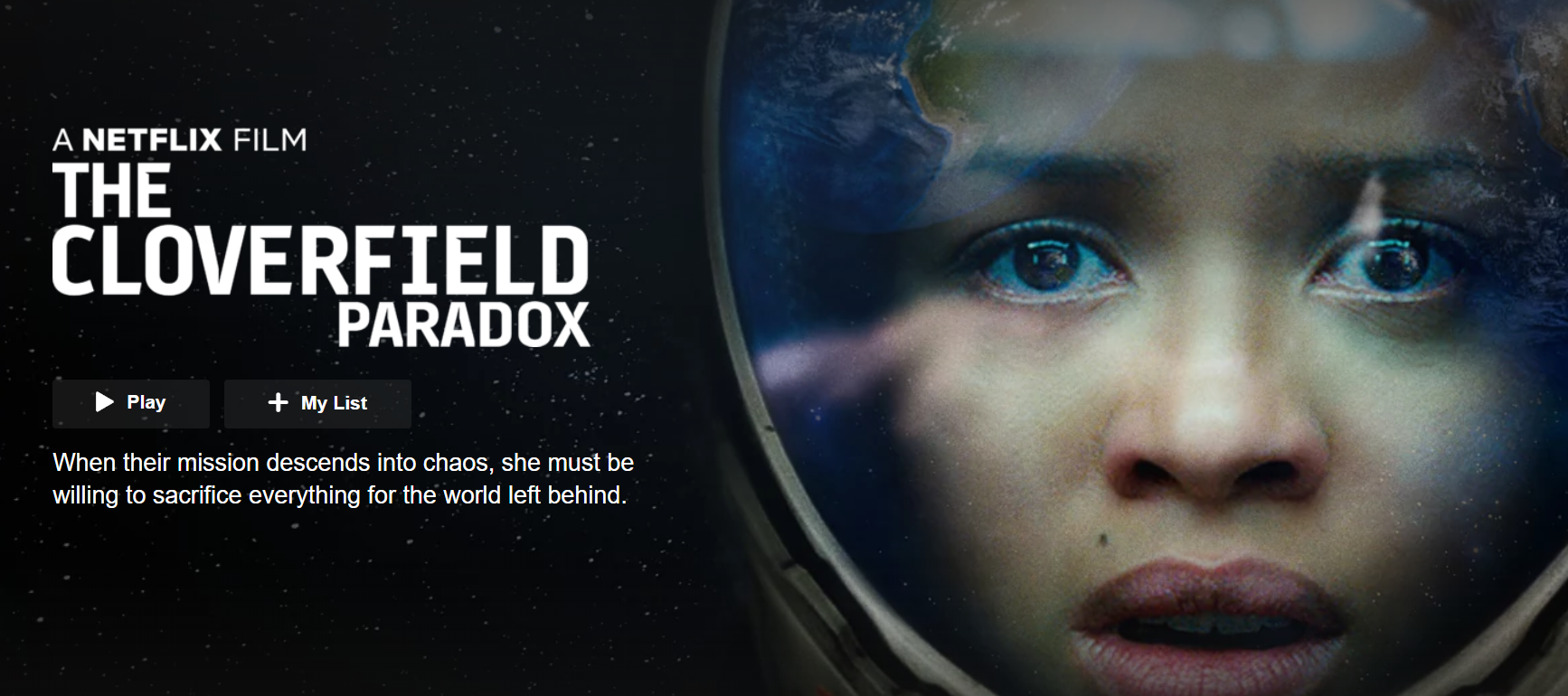“Cloverfield” Tries to Expand to Netflix
Gallery

“Cloverfield Paradox,” now streaming on Netflix, is the third film in the Cloverfield franchise. The film is an attempt to tie the stories of “Cloverfield” and “10 Cloverfield Lane” together and expand the vast dystopian universe. Although the film appears to have the tools for success such as shocking plot reveals and monstrous sights, “Cloverfield Paradox” unfortunately falls a bit flat.
Set during a global energy crisis and the brink of a third world war, we are introduced to Ava Hamilton (Gugu Mbatha-Raw), an engineer who is encouraged by her husband to join a crew of multinational scientists to join the Cloverfield Station. The space station is tasked with the mission to experiment with the world’s most powerful particle generator to aid in the Earth’s energy problem. After Hamilton has a talk with her husband as they sit in the car and experience their fifth black out that day, Hamilton decides to go on the space journey.
We are pushed forward two years into the story where the Cloverfield Space Station has been tirelessly working on the particle generator. As time goes on, Germany is preparing for war on Earth and tensions are high as the thought of another failure is becoming unbearable to the crew. The scene cuts to when Mark Stambler (Donal Logue), who wrote the book on the Cloverfield Paradox, appears on a news broadcast explaining why he’s adamantly against the experiment. Stambler explains his fear of the particle generator, exclaiming that such an experiment is so powerful, they risk creating more problems than solving them. Despite the warning, the scientists go through with another test of the particle generator to find life changing results.
The film effectively builds a believable atmosphere for a high-pressure space mission. The cramped station and constant circular motion of the spaceship is dizzying and delivers a great understanding of the frustrating and rushed nature of finding a solution to the energy crisis below on Earth. The crew members acknowledge the possibility of war on Earth and then the news report that serves as a warning in the beginning of the film helps build intensity for this mission. The crew can not just work on discovery and research. They need to bring a solution back home or there won’t be a home to go back to.
Hamilton approaches this mission with professionalism but her reactions to the events that take place are relatable. Hamilton’s perspective is much like the everyday person being put into extraordinary circumstances and handling each trial and error as they come. The viewers witness Hamilton’s vulnerabilities such as missing her husband and regret joining the mission, yet we also see her get back up to help finish what they all started.
While Gugu Mbatha-Raw’s portrayal of Ava Hamilton imbues the character with emotional believability, the other characters lack needed background. As soon as we’re introduced to one character we are immediately ushered to another and then another but with no defining information on any of them. They are more plot devices than actual fleshed out characters.
Ultimately, the film does tie each of the Cloverfield stories together but in a less than sensational way than we would expect from this series. The intention may be to leave room for more theories than answers, but the result is inconsistent storytelling. The only consistent element in the film, Ava Hamilton, may not be enough to sustain the series into the expanding sci-fi offerings on streaming television.
